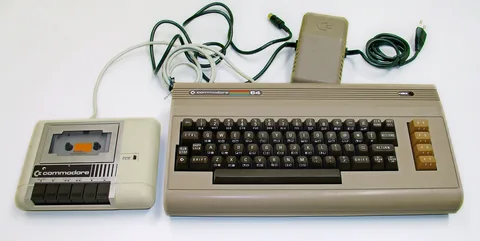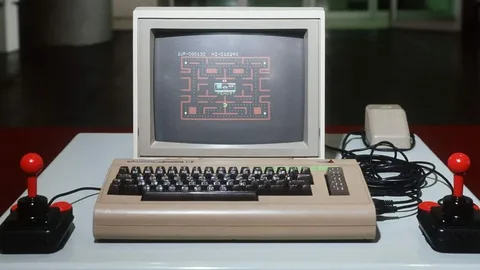The VE Commodore Master Window Switch is essential to your vehicle’s interior, controlling the power windows with ease and convenience. If you’ve found that your windows are unresponsive or the switch feels worn out, it might be time to address the issue. This DIY guide will help you understand, maintain, and fix the master window switch, ensuring your VE Commodore is in top shape. We’ll start by identifying common issues affecting the switch, such as faulty wiring or worn contacts. You can quickly restore its functionality with a few tools and some patience.
Understanding the Role of the Master Window Switch
The master window switch is a crucial component in modern vehicles, providing centralized control over all the windows within the car. Typically located on the driver’s side door, this switch allows the driver to operate each window effortlessly, enhancing both convenience and safety. By consolidating window controls in one location, the master switch enables quick access to all windows without needing individual switches scattered throughout the vehicle.
One of the primary functions of the master window switch is to manage the electrical flow to each window motor. When the driver presses the switch to lower or raise a window, it sends a signal to the corresponding window motor, which then activates and moves the window accordingly. This process involves using relays and circuit boards within the switch, allowing smooth and efficient operation. Modern vehicles also incorporate one-touch window control, where a single press can automatically open or close a window completely.
In addition to its functional role, the master window switch often includes safety features. For instance, most switches have a child lock feature that turns off the rear window controls, preventing young passengers from accidentally operating the windows. This is particularly important for maintaining safety while driving. Some advanced systems may include anti-pinch technology, which stops the window from closing if it detects an obstruction, further enhancing passenger safety.
Regular maintenance and occasional troubleshooting of the master window switch are essential for ensuring its longevity and reliability. Common issues, such as unresponsive windows or erratic movement, may indicate a problem with the switch, wiring, or window motors. By understanding the role of the master window switch, vehicle owners can better appreciate its importance in their vehicles’ overall functionality and safety.
Common Signs of a Faulty Master Window Switch
The master window switch is a crucial component in your vehicle, allowing you to control all the windows from a central location. When this switch starts to malfunction, it can lead to various issues that affect your Windows operation. Recognizing the signs of a faulty master window switch can help you address problems before they worsen.
One of the most noticeable signs of a malfunctioning master window switch is the failure of the windows to respond. Pressing the switch so the windows don’t move may indicate the switch is defective. This lack of response can occur in individual windows or across all windows, depending on the extent of the malfunction.
Another common symptom is intermittent functionality. If the windows occasionally work but fail to respond consistently, this erratic behaviour could indicate a problem with the master switch. Sometimes, jiggling the switch might temporarily restore functionality, but this is often a sign that it is on its way out and needs replacement.
Additionally, you might notice unusual sounds when operating the windows, such as grinding or clicking noises. These sounds indicate that the switch is struggling to connect correctly with the window motor. If the windows are slow to move or exhibit a stuttering motion, this can also suggest issues with the switch.
Finally, physical damage to the master window switch, such as cracks, chips, or visible wear, can clearly indicate its declining functionality. If you observe any physical defects, it’s wise to consider replacement to ensure safe and efficient window operation.
In summary, being aware of these signs—lack of response, intermittent functionality, unusual sounds, and physical damage—can help you identify a faulty master window switch early on, allowing for timely repairs and maintaining the convenience of your vehicle’s window system.
Maintaining the Master Window Switch
The master window switch is a crucial component in a vehicle’s electrical system, allowing drivers to control all windows from a single location. Proper maintenance of this switch ensures optimal performance and prevents issues such as window malfunction or electrical failures. Here are some tips for maintaining your master window switch.
 Regular Inspection
Regular Inspection
Begin by periodically inspecting the master window switch for any signs of wear, damage, or dirt accumulation. Check for loose connections or corrosion around the terminals. It may be time to replace the unit if you notice any cracks or breaks in the switch housing. Additionally, ensure that the wiring harness connected to the switch is secure and free from fraying.
Cleaning
Dirt and debris can accumulate in and around the switch, leading to poor contact and functionality. First, disconnect the vehicle’s battery to clean the switch to avoid any electrical shock. Use a soft brush or compressed air to remove dust and dirt from the switch surface and surrounding areas. A damp cloth with a mild detergent can be used for stubborn grime, but ensure that no moisture enters the switch housing.
Lubrication
If the switch feels stiff or unresponsive, it may require lubrication. Use a silicone-based lubricant, as it will not attract dust like oil-based products. Apply a small amount to the moving parts of the switch to enhance its performance. However, avoid over-lubricating, which can lead to buildup and further complications.
Replacing the Old Master Window Switch
Replacing the master window switch in your vehicle can restore functionality to your power windows and enhance your driving experience. The master window switch controls all the power windows in your car; over time, it may wear out or become unresponsive. If your windows are not operating as they should, it might be time to replace this component.
Before you start, gather the necessary tools: a flathead screwdriver, a Phillips screwdriver, and a trim removal tool. Make sure to disconnect the vehicle’s battery to avoid any electrical issues while working on the switch. Start by removing the trim panel surrounding the switch. Carefully pry it away using the trim removal tool, not damaging the clips or the panel itself.
Once the trim is off, locate the master window switch. It will be held in place by screws or clips. Remove these fasteners and gently pull the switch out of its housing. Disconnect the wiring harness by pressing the tab and pulling it away from the switch.
Now, it’s time to install the new switch. Connect the wiring harness to the new master window switch and secure it in place with screws or clips. Before reassembling the trim, test the new switch by reconnecting the battery and checking if all windows operate smoothly. If everything works as expected, reattach the trim panel, ensuring all clips are secured.
Installing the New Master Window Switch
Installing a new master window switch can seem daunting, but with the right tools and patience, it’s a straightforward process that can save you time and money. The master window switch controls all the windows in your vehicle, and replacing it is often necessary when windows become unresponsive or operate erratically.
Tools and Preparation
Before you begin, gather the necessary tools: a flathead screwdriver, a Phillips screwdriver, and a trim removal tool. Ensure your vehicle is parked on a flat surface, and disconnect the battery to avoid any electrical shorts. It’s also helpful to refer to your vehicle’s service manual for specific instructions related to your model.
Removing the Old Switch
Start by locating the window switch panel, which is usually found on the driver’s side door. Carefully use the trim removal tool to pry off the panel without damaging it. Once you have access to the switch, you will see the screws holding it in place. Remove these screws using the Phillips screwdriver. After the screws are out, gently pull the switch out of the door panel. You’ll need to disconnect the wiring harness attached to the back of the switch, so carefully press the release tab and pull it away.
Installing the New Switch
With the old switch removed, it’s time to install the new one. Connect the wiring harness to the back of the latest master window switch, ensuring it clicks into place securely. Position the switch back into the door panel and reattach the screws. Once the switch is secured, replace the panel, ensuring all clips are correctly seated.
Final Steps
Finally, reconnect the vehicle’s battery and test the new switch. Check all windows to ensure they operate smoothly. If everything functions correctly, you’ve successfully replaced your master window switch! Regular maintenance of your vehicle’s components will provide a smoother driving experience.
Troubleshooting Common Issues with the Master Window Switch
The master window switch is a crucial component in controlling your vehicle’s power windows. If you’re experiencing issues, there are several common problems to consider.
1. Non-Responsive Windows
One of the most frequent issues is when the windows refuse to operate. Start by checking the fuse associated with the power windows. If the fuse is blown, replace it and test the switch again. If the problem persists, the master switch itself may be faulty.
2. One Window Not Working
If only one window is unresponsive, it could be an issue with the individual window switch or the motor. First, try using the master switch to operate the window. If it works, the individual switch may need replacement. If it doesn’t, inspect the window motor and wiring for any damage.
3. Intermittent Operation
Windows that operate sporadically can be frustrating. This often indicates a poor connection or a failing switch. Remove the switch panel and clean any dirt or corrosion from the connectors. If the problem continues, consider replacing the master window switch.
4. Windows Moving Slowly
Slow-moving windows can signal a failing motor or inadequate lubrication in the window tracks. Inspect the window tracks for obstructions and apply a silicone-based lubricant if needed. The window motor may require replacement if lubrication doesn’t resolve the issue.
Conclusion
Tackling the repair of your VE Commodore Master Window Switch can feel intimidating at first. Still, it is a very achievable DIY project with the appropriate tools and a detailed guide. Familiarizing yourself with the switch’s function and common issues helps in early fault detection and effective maintenance. Regularly cleaning and inspecting the switch extends its lifespan and ensures optimal performance. When replacement is necessary, carefully following installation instructions can restore complete control over your vehicle’s windows. Troubleshooting common issues, like loose connections or specific window failures, ensures adequate repairs. Investing time in these steps enhances your VE Commodore’s reliability and safety.
FAQS
Q1: How often should I maintain my VE Commodore Master Window Switch?
A1: Inspect and clean your VE Commodore Master Window Switch every few months, particularly if you frequently encounter dusty or dirty environments.
Q2: Can I use any cleaning agent on the switch?
A2: Use a mild detergent and avoid harsh chemicals that might harm the switch’s components.
Q3: What if my new switch doesn’t work after installation?
A3: Double-check the wiring connections for a secure fit and verify that the vehicle’s electrical system is in good condition. If the problem persists, consider consulting a professional.
| Other Good Articles to Read |
| Skank Blogs |
| Unreal Blogs |
| Tba Blogs |
| All City Forums |
| Dany Blogs |
| Refuge Blogs |
| The Music Blogs |
| Key Forums |
| The Big Blog Theory |
| Joe Blogs |
| Blogs 4 Me |
| Blogs Emon |
| Related Business Listings |
| Contact Directory |
| Local Business Profiles |

